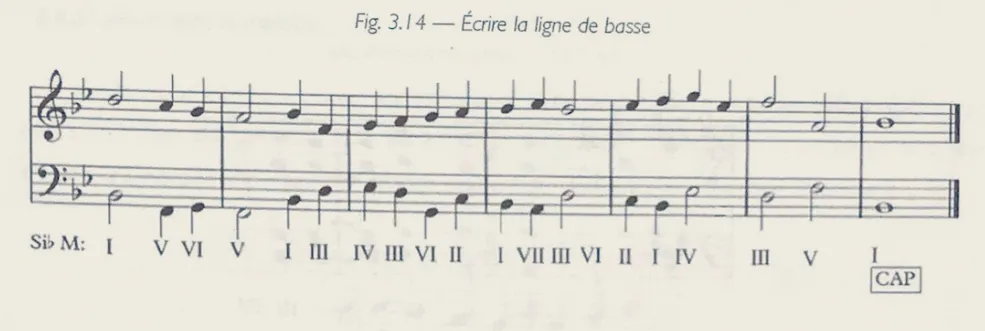3.4 Melody Harmonization
So far in our studies we’ve seen how to harmonize from a given bass line when all the chords are in root position, so we haven’t been given any choice for chords.
Let’s learn a technique to help harmonize (choose chords) a given melody. Here’s a soprano line as an example to start:
Step 1: Analyse the Soprano
- Play it once to get a feel for it and for the direction
- Identify the key the melody is in
- Bb Major
- Identify the cadenzas
- in this specific exercise, there are 2 cadenzas: a DC in the middle
- Identify other elements:
- 7ths
- Harmonic marches
- Ornamental notes (Passing Tone, Escaped Note, Embroidery (?))
- For now though, in our exercises, we’ll keep it more simple and assume all notes are part of a chord, and that there are no 7ths.
Step 2: Identify Possible Chords
- When you have a note on the soprano, it can be harmonized with (at least) 3 different chords.
- i.e. if you’re in C Major and you have C on the soprano: C, Am, F
- For now, we’re not allowing ornamental notes, which means we most likely will need 1 chord per note of the melody. At least, that’s how we’re going to write our possible chords.
- The end must always be V-I

Step 3: Creation of Harmonic Scheme
Pick a coherent scheme using the tools we’ve learned
- Cycle of Fifths
- Substitutions
- Schönberg Analysis

Step 4: Write the Bass Line

Step 5: Fill the Inner Voices
